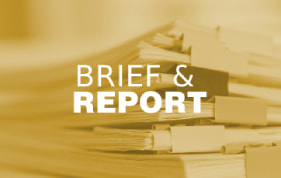With suicide now the second leading cause of death among children, adolescents, and young adults (aged 15-24 years old) in the United States, it is apparent that the COVID-19 pandemic has not only exacerbated rates of depression and anxiety, but also illuminated the fractures in our youth behavioral health system. In response, states are focusing on ways to advance policies that aim to expand coverage for youth mental health services.
Individuals suffering from mental health conditions or substance use disorders (SUDs) face many challenges accessing care and often do not seek treatment. Even before the COVID-19 pandemic, Centers for Disease Control and Prevention (CDC) data found 1 in 5 children were diagnosed with a mental health disorder, yet only 20% of those children received appropriate care.
In the past two years, over 100 laws in at least 38 states have been enacted with a focus on supporting schools to act as a primary access point for youth behavioral health care. At least half of all states are applying the co-location approach, where both types of care are delivered at the same site, to better integrate physical and behavioral health care. According to the Kaiser Family Foundation report, more than four-fifths of states launched initiatives related to screening for behavioral health needs, an effective strategy for Medicaid to connect those with behavioral health needs to the appropriate services.
Medicaid plays a pivotal role as the largest payer of behavioral health services, including both mental health and SUD services. Efforts to address these issues have been a focus in Medicaid at the federal level, including in the 2018 SUPPORT Act and more recently in the 2021 American Rescue Plan Act (ARPA), which provided enhanced Medicaid funding for certain behavioral health providers and mobile crisis services. The Center for Medicare & Medicaid Services (CMS) under the Biden Administration has highlighted behavioral health policy and investments as a federal Medicaid priority.
During National Mental Health Awareness Month, the Department of Health and Human Services (HHS) called for states to prioritize and maximize efforts to strengthen youth mental health and detailed HHS’ plans to support state-wide coordination across federal funding streams to expand youth mental health services. This blog highlights California’s approach and spotlights other states’ efforts to bolster the children’s behavioral health system.
State Strategies to Strengthen the Youth Behavioral Health System
There has been significant work underway in California for years to address youth behavioral health services, but up until recently it did not include substantial investments to redesign the mental health system for youth, and families. California exemplifies ways to leverage policy levers and make significant state investments to cultivate and strengthen the youth behavioral health system.
In 2021, Californiaenacted groundbreaking legislation by making significant investments to reimagine its youth behavioral health system. The Children and Youth Behavioral Health Initiative is a $4.4B investment intended to enhance, expand, and redesign the systems that support behavioral health for youth, children and families. This initiative, administered by the California Health and Human Services Agency and its departments, aims to evolve California’s behavioral health system in which all children (25 years of age and younger) regardless of payer, are served for new and existing behavioral health needs.
This multi-year strategy seeks to enhance and redesign the current behavioral health system by integrating behavioral health into physical health, education, and other areas that support children and families. With a stronger focus on prevention and early intervention, the Initiative will distribute school-linked partnership, capacity, and infrastructure grants to support implementation of the initiative for behavioral health services in schools and school-linked settings.
The Initiative will also provide incentive payments to qualifying Medi-Cal (Medicaid) managed care plans to establish interventions that expand access to preventive, early intervention, and behavioral health services for children in publicly funded childcare and preschool, as well as pre-K-12 children in public schools. Also included are efforts to submit a State Plan Amendment to incorporate the dyadic services benefit under Medi-Cal, whereby screening for behavioral health problems, interpersonal safety, tobacco and substance misuse and social determinants of health are provided for the child and caregiver or parent during medical visits. A key piece of the Initiative stipulates that every component outlined in the Children and Youth Behavioral Health Initiative Act may only be implemented if the Department of Health Care Services confirms that federal financial participation under the Medi-Cal program will not be jeopardized. Indeed, the intricate design and implementation of the Initiative would not be possible without partnerships from other State agencies, education stakeholders, subject matter experts, and community partners to deliveressential services from prevention to treatment and recovery.
California’s commitment to address youth behavioral health services at a statewide level illustrates the various efforts emerging across the country. California is one state that is advancing multi-faceted strategies through legislation and Medicaid, but other states have used various Medicaid authorities including 1115 demonstrations, State Plan Amendments (SPAs), and 1915(c) Waivers to remove accessibility roadblocks and enhance youth behavioral health services. States have taken a variety of approaches in their commitments to bolster the system of care around the country that include:
- New York amended its state plan amendment to expand the EPSDT benefit to enable a greater focus on prevention, early intervention, and expansion of behavioral health services.
- New Jersey amended its state plan to make Mobile Response and Stabilization Services (MRSS) for youth up to age 21 reimbursable under Medicaid’s EPSDT benefit.
- Ohio RISE (Resilience through Integrated Systems and Excellence) for youth with complex behavioral health needs was enacted through a Medicaid 1915c waiver. Through this program, a single managed care organization provides new, targeted behavioral health services and intensive care coordination
- Washington State passed the Behavioral Health Emergency Services legislation E2SHB 1688 (Chap. 263, Laws of 2022) to ensure coverage for all emergency behavioral health services (adult and children) to protect consumers from charges for out-of-network health care services by addressing coverage of emergency BH services.
Moving Ahead
States can combine the power of their policy levers along with the cascade of forthcoming federal dollars to strengthen the youth mental health system of care. The Bipartisan Safer Communities legislation includes significant funding for mental health screening, among other critical services. The Bipartisan legislation seeks to foster the tremendous opportunity for states and schools to increase behavioral health capacity for students and mental health professionals, evidenced by the School Based Mental Health Services (SBMHS) Grant Program, the School Based Mental Health Service Professionals Demonstration Grant, and several other investments for supportive services in schools.
Ensuring equitable access to a plethora of high-quality behavioral health services for youth requires the individual and collective commitment of states. The children’s mental health crisis has reached unprecedented levels and the opportunity for states to lead by example has arrived. Fortunately, states have significant tools to address the youth mental health crisis through the design and deployment of innovative policies and mission-aligned collaborations. Federal funds and state policy levers will help advance a robust and accessible children’s behavioral health system. As our communities work to rebuild in a post-pandemic world, states have the unique opportunity to provide today’s youth with compassion, essential behavioral health resources, and integrated systems to meet them where they are.
For additional information, please read our Bolstering the Youth Behavioral Health System: Innovative State Policies to Address Access & Parity brief, which explores state policy levers to advance access and availability of behavioral health services (encompassing mental health and substance use disorders) for youth.




 In December 2021, CMS approved
In December 2021, CMS approved  New York, like North Carolina, plans to seek CMS’ approval to offer a range of community services that would be provided through newly established networks of community-based organizations in all regions of the state. The state envisions that the CBO networks will include small neighborhood organizations familiar with their communities’ needs and the capacity to address multiple social risk factors as well as larger county or regionally focused entities. In addition, New York is asking CMS to support a health equity focused proposal which would provide certain “in-reach” services for incarcerated individuals before they are released.
New York, like North Carolina, plans to seek CMS’ approval to offer a range of community services that would be provided through newly established networks of community-based organizations in all regions of the state. The state envisions that the CBO networks will include small neighborhood organizations familiar with their communities’ needs and the capacity to address multiple social risk factors as well as larger county or regionally focused entities. In addition, New York is asking CMS to support a health equity focused proposal which would provide certain “in-reach” services for incarcerated individuals before they are released. Oregon submitted a request to use federal Medicaid spending authority to address community-based health inequities and to establish statewide health equity investments (HEIs). The state is especially focused on supporting consumers during disruptions in coverage, life transitions, or disruptions caused by climate events. Community-based investments will reflect empirical evidence and community assessments and may include efforts to improve building environments and expand culturally and linguistically. Addressing climate events may be of particular interest as it addresses multiple priorities for Administration.
Oregon submitted a request to use federal Medicaid spending authority to address community-based health inequities and to establish statewide health equity investments (HEIs). The state is especially focused on supporting consumers during disruptions in coverage, life transitions, or disruptions caused by climate events. Community-based investments will reflect empirical evidence and community assessments and may include efforts to improve building environments and expand culturally and linguistically. Addressing climate events may be of particular interest as it addresses multiple priorities for Administration.